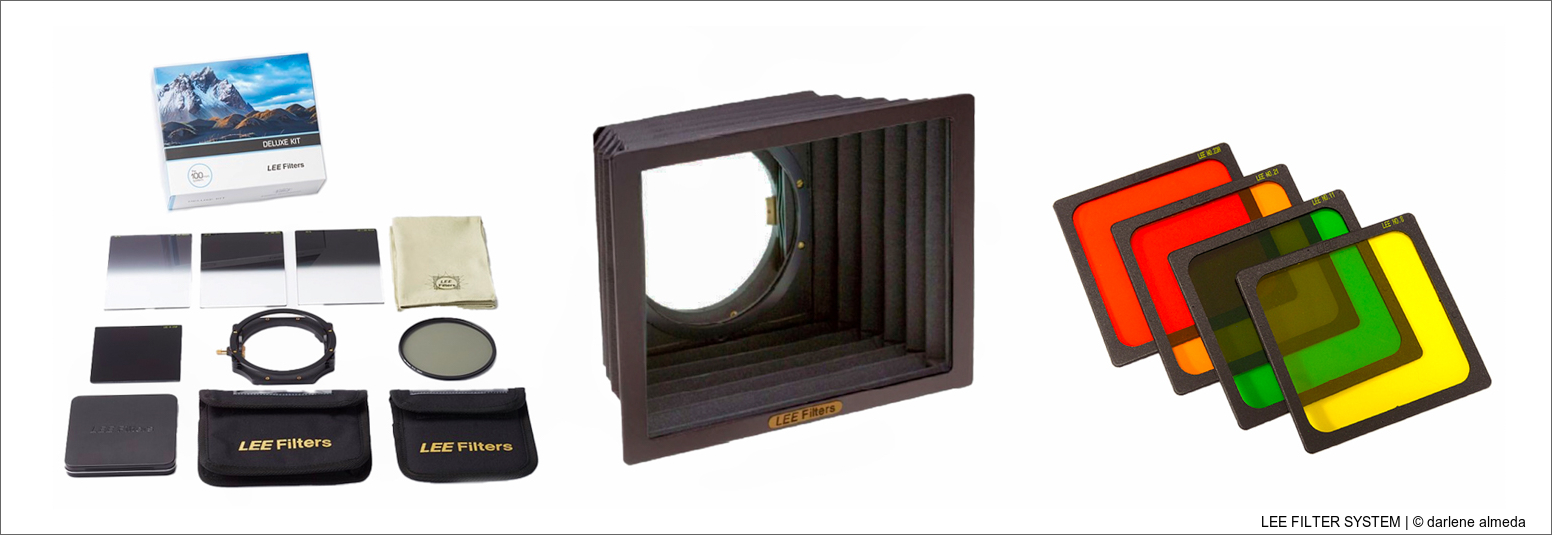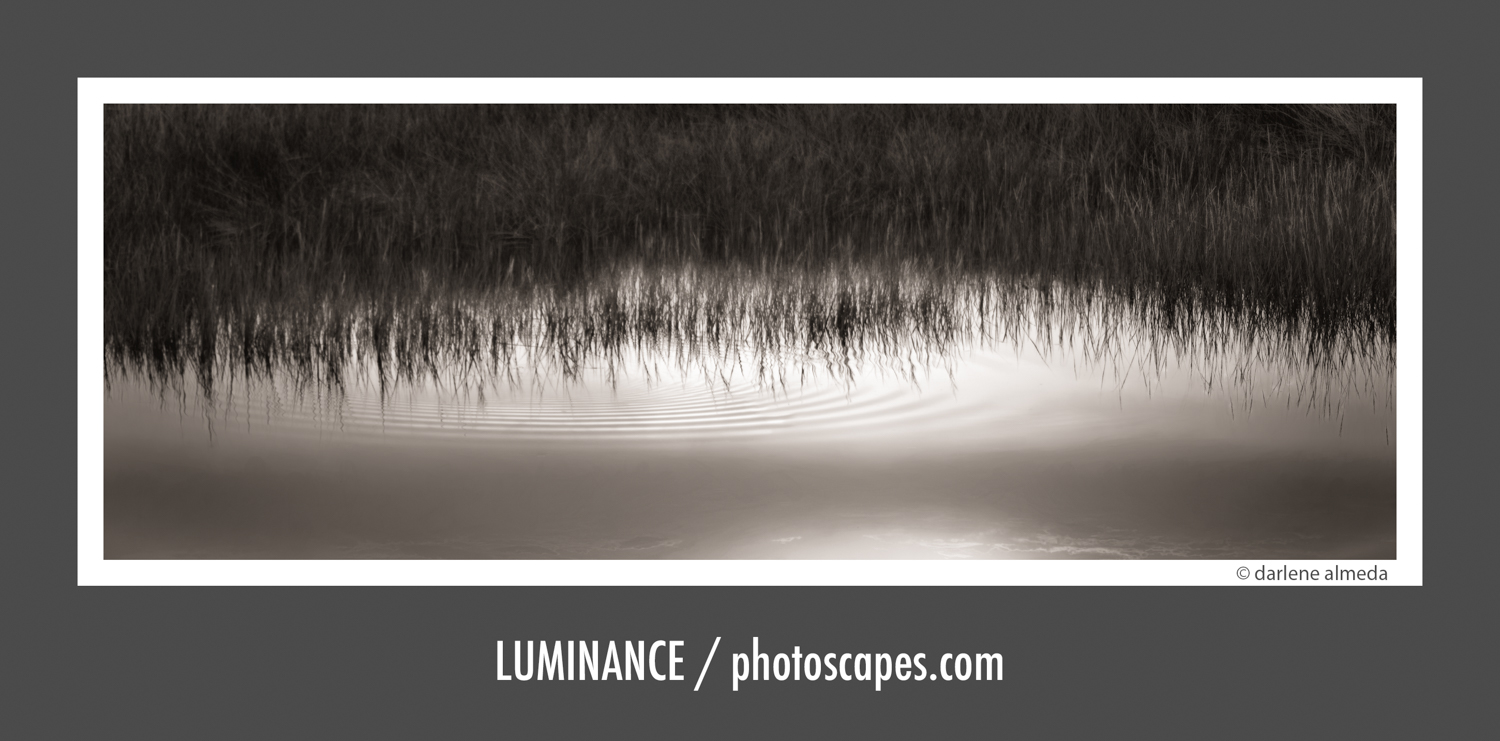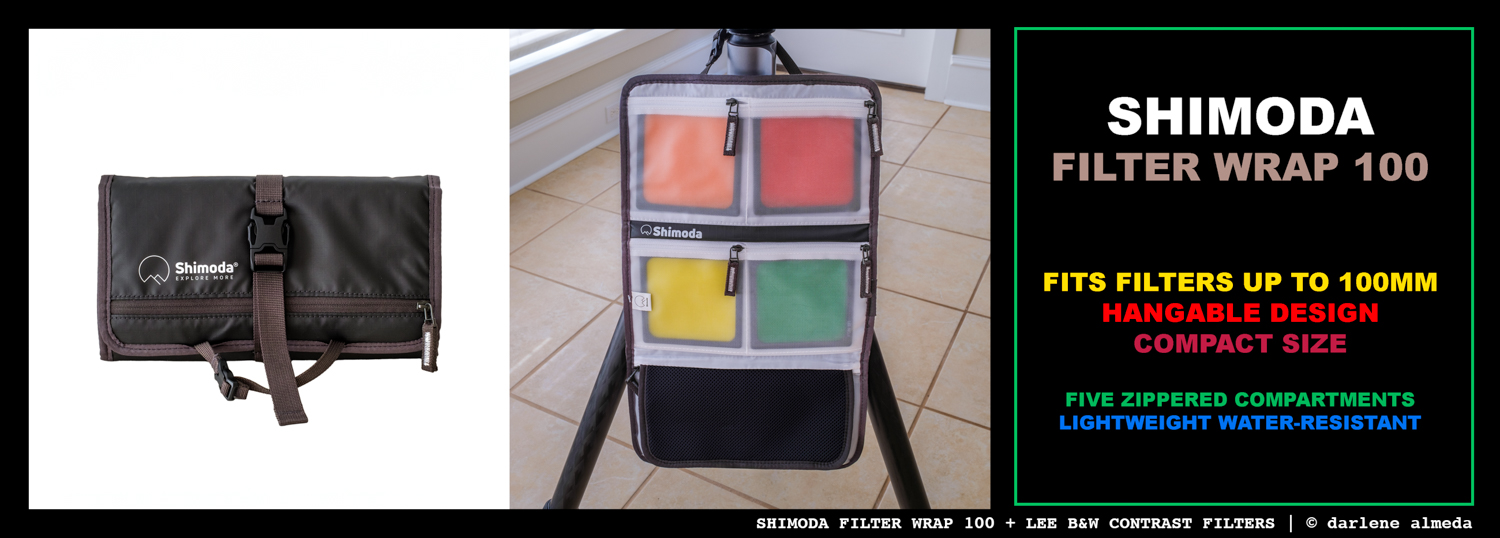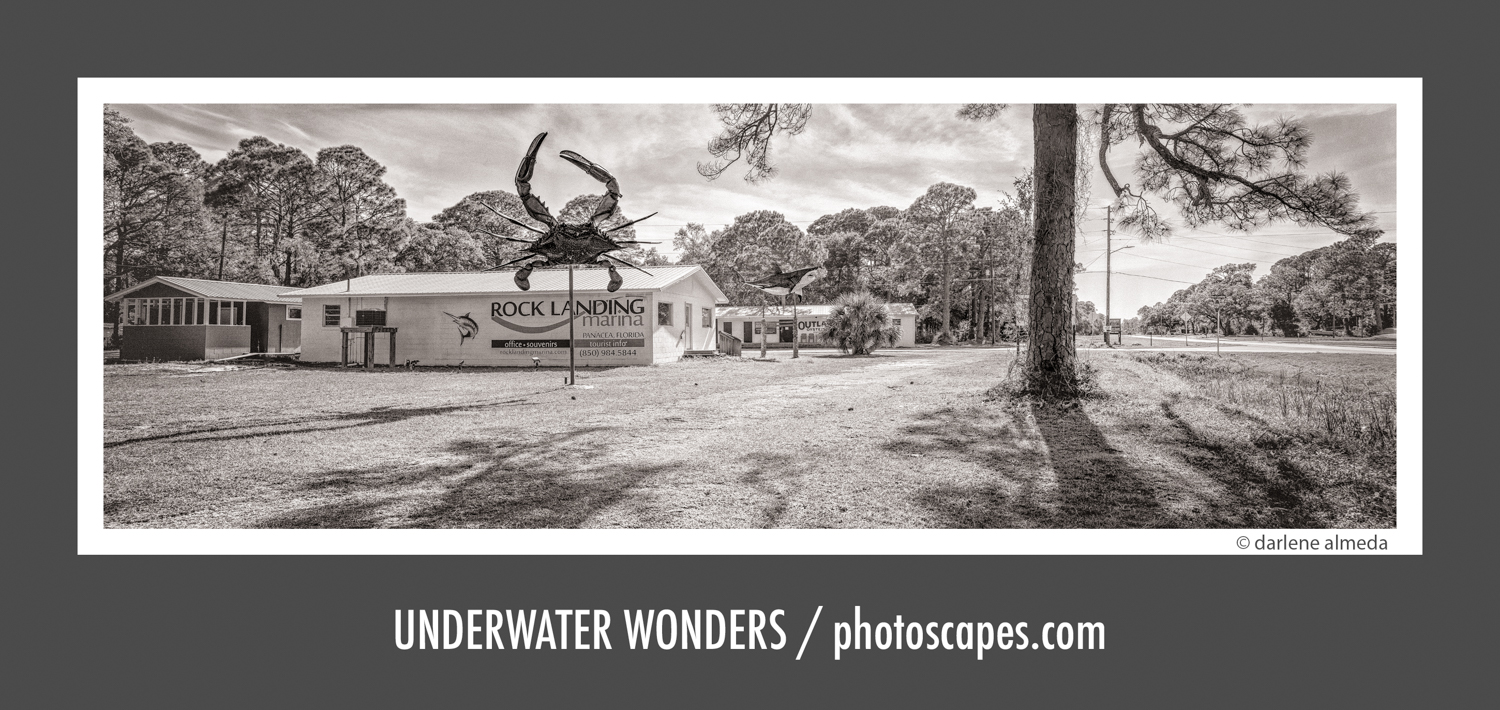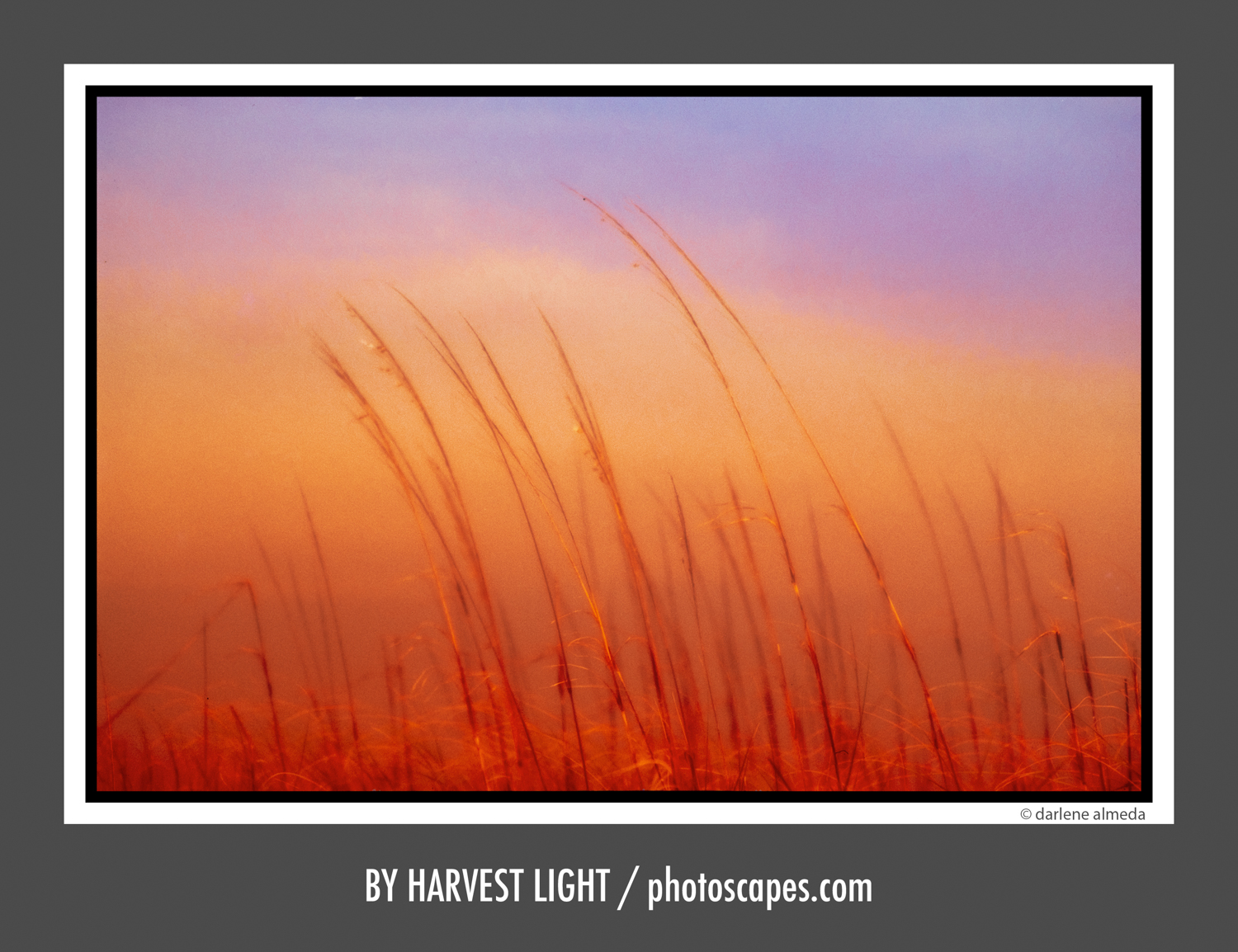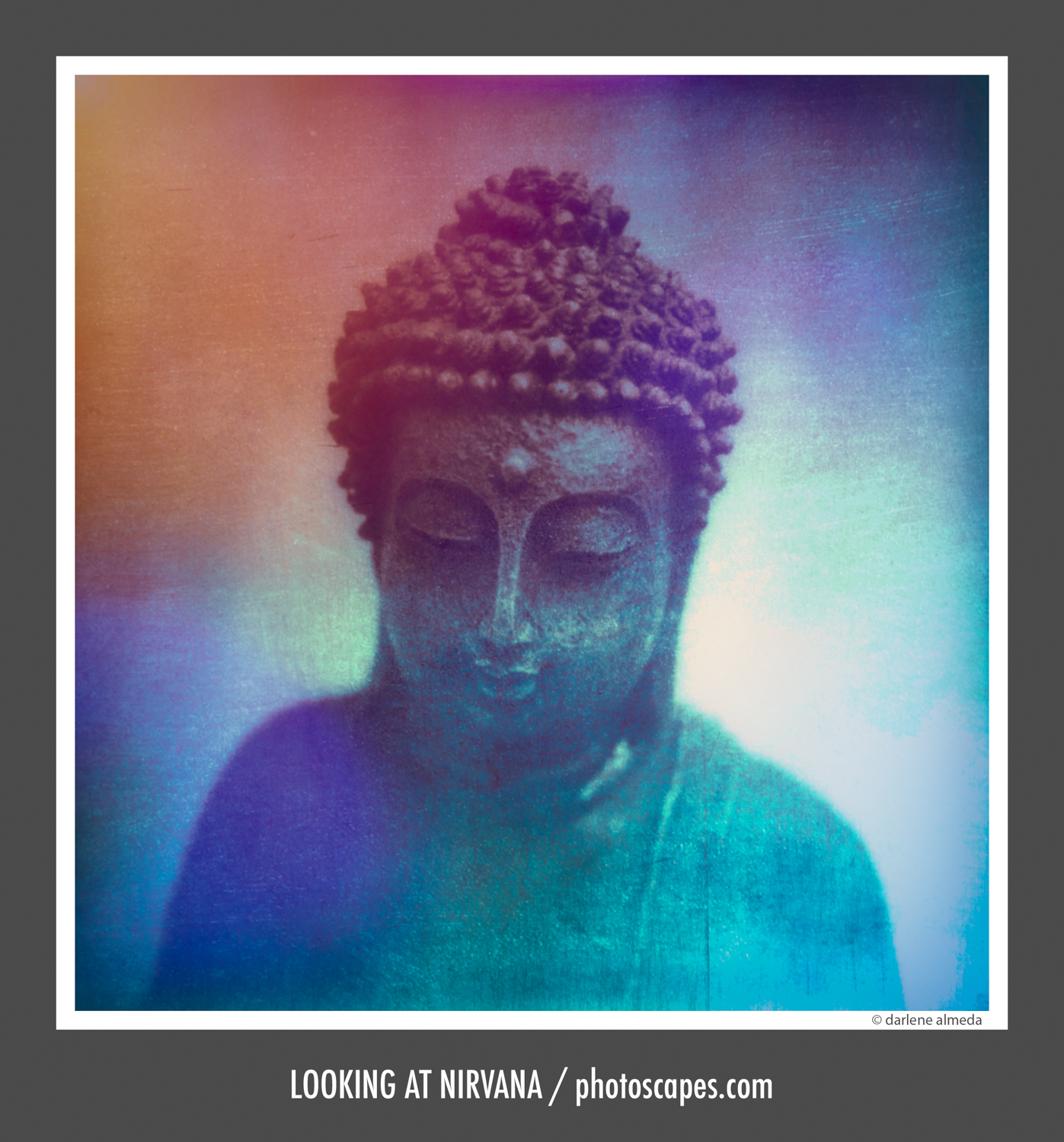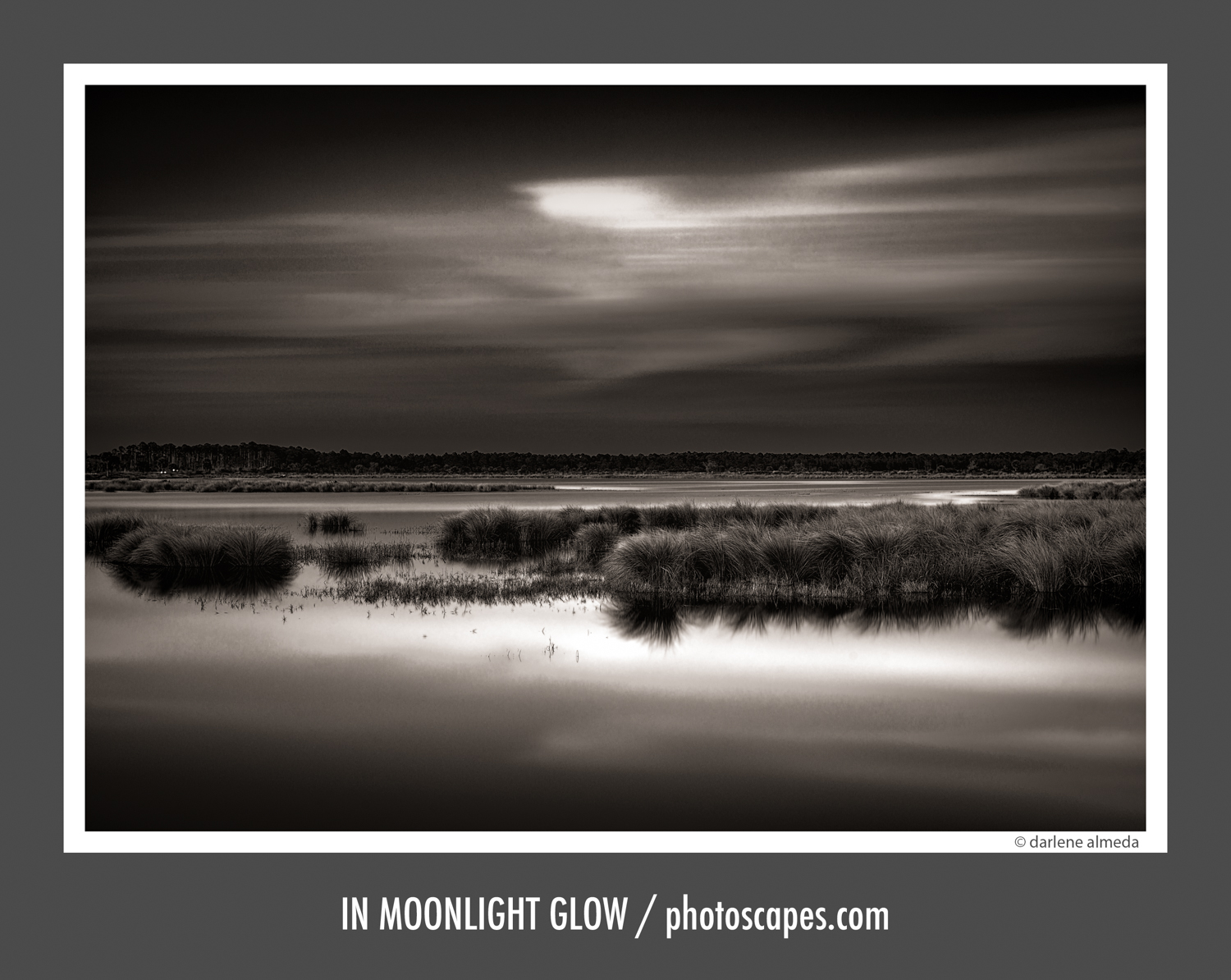FILTERS: NEUTRAL DENSITY, COLOR CORRECTION/CONTRAST, GELATIN BW
INTRO
Physical filters aren’t obsolete. Polarizers, NDs, and B&W contrast filters still do things software can’t. Most color tweaks can be applied in post; however, light-shaping and reflection control often can’t.
Below is a record of some of the Filters and accessories I have experience with. I can be contacted regarding questions about my experience with these items.
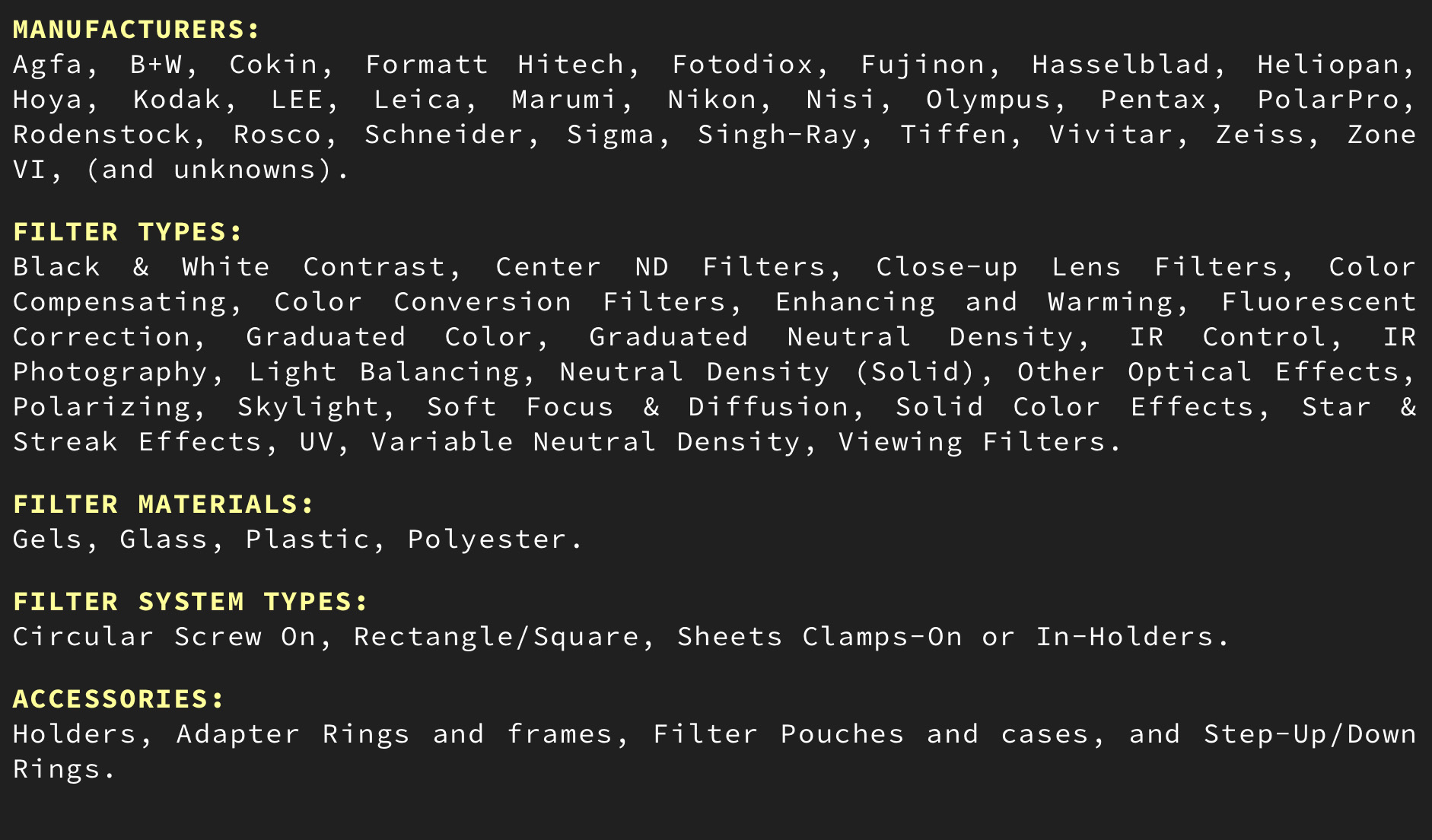
LINKS
CENTER FILTERS:
Center Filters For Large Format Lenses by Daniel W. Fromm.
MATTE BOX:
SmallRig #2660 (see article here)
FILTERS: WHAT STILL MATTERS (Film & Digital)
LEE FILTER SYSTEM
Why Use Filters Today
- Control light, not just pixels. Polarizers kill glare, recover color, and deepen skies in a way that post can’t replicate convincingly.
- Shape time. Neutral density (ND) filters extend exposure for motion blur, long-exposure mood, and highlight control.
- Direct tonal control (B&W). On film, yellow/orange/red filters alter tonal relationships at capture—hard to mimic perfectly later.
- On-set consistency. For mixed lighting (events, interiors), filtration still speeds up workflow and keeps color uniform across a set or album.
When Software Is Enough
- Global color balance and subtle warming/cooling. Digital raw files + modern profiles handle most of this with more flexibility.
- Creative color effects. Often faster and cleaner in post unless you want the in-camera commitment.
IMAGE: LUMINANCE
FUJIFILM X-PRO2 + XC50-230/4.5-6.7 + POLORIZER
Core Filter Types (Plain-English Uses)
- Polarizer (CPL). Reduce reflections on water/glass, deepen skies, boost foliage color; ~1–2 stop loss.
- Neutral Density (ND). 3–15 stops to drag shutter: water, clouds, crowd ghosts, flash/ambient balancing in bright light.
- Graduated ND (hard/soft). Hold sky back relative to land for high-contrast landscapes.
- B&W Contrast (Y, YG, O, R). Control separation in skies, foliage, skin—especially with B&W film.
- Diffusion/Soft Focus. Gentle halation and skin smoothing with eye clarity intact (e.g., Softar look).
- Specialty (IR, color conversion/compensating, enhancing). Niche but powerful when needed.
Formats & Systems (How to Mount Them)
- Screw-in circular. Simple, durable, fastest in the field. Use step-up rings to buy fewer, larger filters that cover all lenses.
- Square/rectangular + holder. Best for grads and stacking (landscapes/tech cams). Choose sizes that clear your widest lens to avoid vignetting.
- Sheet/gel. Lightweight, great on lights/windows; treat gently.
- Magnetic systems. Fast swaps; check for vignetting with wide angles and for ring compatibility.
Materials: Glass (optically robust), resin/poly (light, cheaper, scratches more easily), gel (lighting workhorse).
SHIMODA FILTER WRAP 100 + LEE B&W CONTRAST FILTERS
Film vs. Digital: What I Actually Do
- Film (4×5, 6×17, Hasselblad):
- Keep #8 Yellow and #11 Yellow-Green handy; #21 Orange and #23A Red are scene-dependent.
- Use ND Stoppers (6/10/15 stops) when the scene supports long-exposure mood.
- B&W contrast is capture-critical; I don’t rely on post to emulate it.
- Digital (MF and APS-C/FF):
- I shoot clean and correct most color in post.
- I still reach for polarizers and NDs—those are irreplaceable for reflections and time control.
- Live View replaced the “Polaroid test,” but technical cameras still benefit from deliberate filtration.
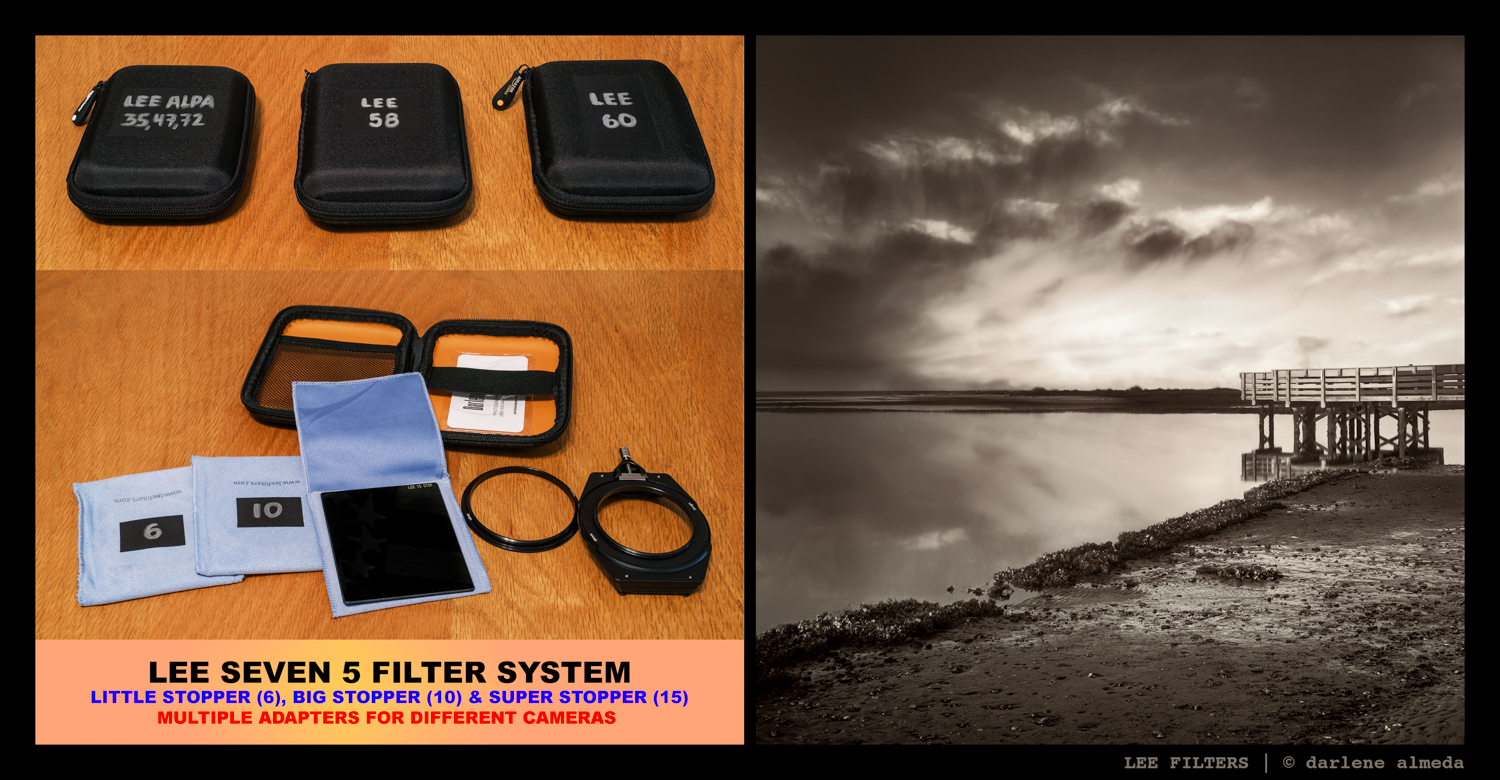
LEE FILTERS & IMAGE: MAMIYA 6 + FUJIFILM ACROS + BIG STOPPER
A Practical Story (Why ND Still Matters)
A two-minute film exposure by the water looked “quiet,” but the best part was invisible: a couple walked the pier during the exposure—no trace in the final frame. Long exposures don’t just darken; they edit reality over time—a look you can’t dial in later with the same authenticity.
My Current Kit & Rationale
- Holders / Shade: I retired my aging LEE hood/holder after the hood material failed and switched to a SmallRig matte box (sturdier for my 6×17 and 4×5).
- LEE Seven5 → LEE 85: I still use Seven5 (75×90 mm) for portability (I source components used). The modern equivalent is LEE 85.
- ND Stoppers: Little (6-stop), Big (10-stop), Super (15-stop) for landscapes/long exposures.
- B&W Contrast Set: #8, #11, #21, #23A depending on film/scene.
- Carry: Shimoda Filter Wrap 100 for 4×4 filters—compact, weather-resistant, tripod-friendly, with a zip pocket for caps. (They also make a Wrap 150 for larger filters.)
TIFFEN 67MM TRICHROMATIC FILTER KIT
Experiments: Trichromatic on B&W Film
I’ve been testing 25A Red / 58 Green / 47 Blue (67 mm) for tri-color separation on B&W film. It’s fiddly and not cheap (my graphics-arts set was ~$127), but creatively addictive. Step-up rings make one set work across bodies.
Event/Wedding Color Consistency
(Why Filters Still Earn Their Keep)
Back in Wedding album days, for example, bridesmaid dress colors had to match exactly across the church, pavilion, and ballroom photos. We:
- Shot the same film batch,
- Balanced ambient to our strobes (windows, tungsten), often with gels on lights/windows, and
- Kept color uniform so side-by-side spreads didn’t drift.
Digital makes the correction easier, but on-set filtration still saves time and keeps files coherent.
IMAGE: UNDERWATER WONDERS ON LAND
FOTOMAN 6×17 + FUJIFILM ACROS II + #11 YELLOW GREEN FILTER
Pros & Cons (Now, Not 1998)
Pros
- In-camera control of light/reflection/time = looks software can’t fake well.
- Faster, more consistent files when light sources fight each other.
- Classic diffusion for portraits that keeps eye sparkle.
Cons
- Cost, bulk, scratch risk, and setup time.
- Holder systems can vignette; cheap kits can flare.
- Some older hoods/holders don’t age well—buy durable.
What I Recommend You Actually Pack
- Polarizer (your largest thread + step-ups).
- ND 6- and 10-stop (add 15-stop if you love ultra-long exposures).
- B&W film trio: #8 Yellow, #11 Yellow-Green, #21 Orange (add #23A Red for dramatic skies).
- One solid holder solution that clears your widest angle—don’t juggle three systems.
- A padded wrap/wallet (Shimoda/Think Tank) and a cleaning kit (blower + microfiber).
Closing
Digital moved much color work to post, but polarizers, NDs, and B&W contrast remain capture tools. Use software where it’s stronger; use glass when physics matters. That balance is how I keep a consistent look without hauling a trunk of filters.


